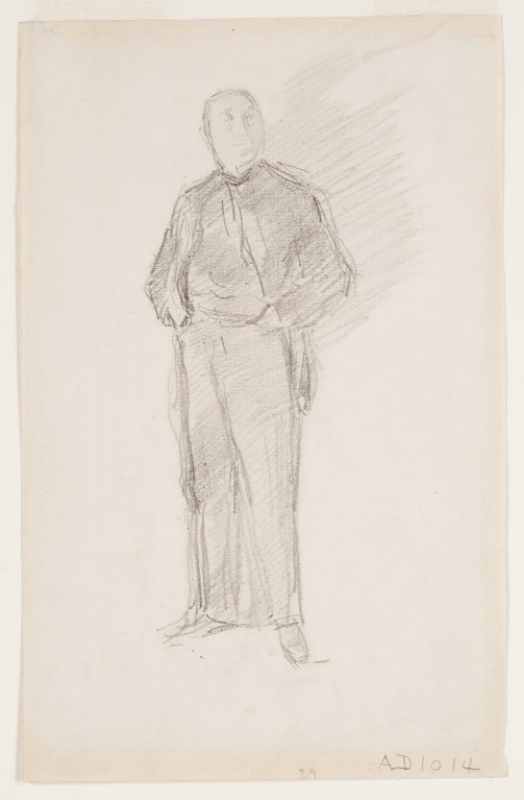Composition
This may have been a study for one of the lithographic portraits, Thomas Way c151, Study No. 2: Mr Thomas Way c152 and Study No. 1: Mr Thomas Way c153, but it shows no significant changes in composition or technique.
Technique
Thomas Robert Way (1861-1913) described Whistler drawing a portrait of his father Thomas Way (1837-1915):
'In the office there were two rooms with a door between, and he stood in one and his model at the end of the other, where a gas stove was burning close to the ground; hence the face was lit from below, and a big shadow thrown upon the wall behind. Three successive drawings did he make; the first, not carried very far, he scribbled over; the second he completed but was not satisfied with, and the he began the third. It was a winter's afternoon, and I was in the inner room with my father, and at work myself, and did not notice how the daylight was failing; but at last it dawned upon me, and I went to Whistler to light the gas for him. Then I realised the position, for the bright light of the stove in the inner room had filled it. "Why, Mr.Whistler, you have no light - you cannot see- you are drawing by feeling!" "Almost, Tom, almost!" was his answer, and it was literally true. This drawing proved a most excellent portrait.' 1
See further details in Stephanie L. Strother, 'Cat. 38 Study for Portrait of Thomas Way, 1896: Curatorial Entry' in Clarke, Jay A., and Sarah Kelly Oehler, eds., Whistler Paintings and Drawings at the Art Institute of Chicago, The Art Institute of Chicago, 2020, website (cat. no. 38).
Conservation History
The paper is dark cream, browned at the edges, with a neat horizontal grain. It seems to have been cleaned around Way's right foot. The paper is slightly shiny, a creamy white on the front.
Last updated: 11th December 2020 by Margaret






